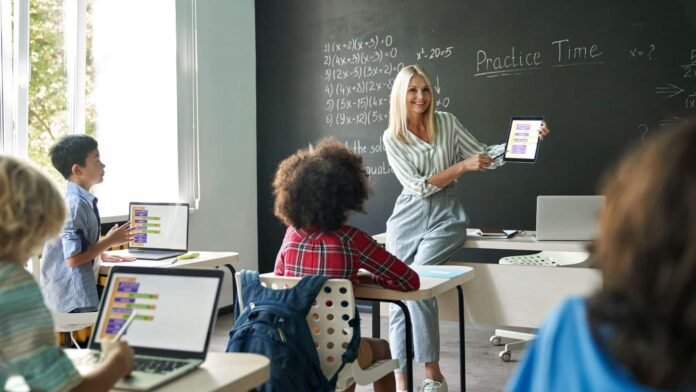The success of an educational institution hinges not only on quality academics but also on effective communication and collaboration among its stakeholders. With the advent of digital technology, the traditional modes of school communication are giving way to more efficient and interactive platforms, like School ERP systems. Here’s a look at how a School ERP fosters communication among stakeholders.
Defining a School ERP
A School ERP (Enterprise Resource Planning) system is an all-in-one software solution designed to streamline the diverse administrative tasks of a school. Going beyond merely managing tasks, an ERP for school serves as a central hub for communication among all school stakeholders – administrators, teachers, students, and parents.
Facilitating Seamless Communication
An efficient ERP system enables real-time, two-way communication between the school and parents. Teachers can update parents about their child’s academic performance, attendance, and other activities. Parents, in turn, can communicate their concerns or queries directly through the platform, fostering a strong home-school connection.
Enhancing Teacher-Student Interaction
A School ERP also augments the teacher-student interaction. Teachers can provide personalized feedback, assign homework, or address queries using the system. Students, on the other hand, can submit assignments, discuss doubts, and stay updated about class schedules and tests.
Strengthening Administrative Communication
From managing staff to coordinating various school functions, administrators play a pivotal role in a school’s functioning. An ERP for school aids administrators in effective task management while providing a platform to communicate with staff members. Any changes in school policies or updates can be conveyed efficiently using the ERP system.
Empowering Group Collaboration
An ERP system also empowers group collaboration. School ERP platforms offer features like group chats or forums, where students can work on group projects, share ideas, or discuss class materials. This virtual collaboration enhances the learning experience and promotes peer interaction.
Building a Transparent Environment
One of the significant advantages of a School ERP system is the transparency it brings. Every stakeholder has access to the relevant information, leaving no room for misunderstandings or miscommunication. This transparency fosters trust among stakeholders and enhances the overall efficiency of the school.
Conclusion
The importance of effective communication in a school setting cannot be overstated. A School ERP system, with its communication-friendly features, plays a crucial role in enhancing the interaction among various stakeholders.
The system goes beyond traditional management tasks and fosters an environment of collaboration and transparency. It bridges the communication gap between home and school, allows for real-time feedback, and enhances student participation. Moreover, it helps administrators convey important updates seamlessly, thereby keeping the entire school community on the same page.
As the educational landscape evolves, integrating a School ERP system is no longer a luxury but a necessity. It is not just a tool for operational efficiency, but a platform for nurturing a collaborative and communicative educational environment. By embracing an ERP for school, institutions are taking a significant stride towards a more connected, engaged, and successful school community.













